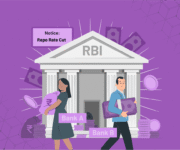OCEN, or Open Credit Enablement Network, is a framework and protocol introduced by Nandan Nilekani in July 2020 as part of IndiaStack.
India’s lending industry can still be considered in its nascent stage. Banks and NBFCs essentially only lend to the organised sector and large corporations. This has caused a large swath of India’s small and medium-sized businesses to operate without access to credit. Only around 11% of the MSME’s in India can easily access business credit when they require it.
The main problem is that: lenders in India lack a reliable way to ascertain the creditworthiness of MSMEs. This means that when an MSME approaches a bank for a loan, they need to face a long process even though it is highly likely they won’t receive the loan.
Therefore, Indian businesses need access to credit quickly, small loan amounts, and quick repayment schedules. However, the current lending process cannot distribute such loans at scale.
This is where OCEN steps in.
A Short Primer on OCEN
The current lending system in India has been called “broken” by many experts and industry stakeholders. OCEN is a centralised protocol that aims to solve this problem.
At its most basic, OCEN is a marketplace through which lenders can get information relating to the creditworthiness of borrowers.
Through OCEN, borrowers can connect with lenders and thereby access credit. In addition, the OCEN system is consent-based. This means that borrowers can choose whether to participate in the system or not.
The system will collect data relating to the borrowers’ creditworthiness through public and private sources if they choose to participate. This data can then be passed on to lenders considering offering credit to the concerned participant.
OCEN is software architecture. This means it operates entirely digitally and acts as a platform for borrowers and lenders to interact. In addition, OCEN uses smart integrations and APIs to operate, a new technology that has just started to find applications in various industries.
Through the OCEN system, lenders, account aggregators, and loan service providers can reach prospective borrowers cost-efficient and quick way.
The primary advantage of OCEN is that it significantly reduces lending administrative costs for lenders, enabling them to offer low-ticket loans to a large volume of borrowers.
How does OCEN work?
The technology and methodology behind OCEN are still under wraps. However, while introducing OCEN, Nandan Nilekani has provided a sneak preview of how OCEN will work.
According to the presentation:
- OCEN will offer a standard set of tools to lending industry stakeholders.
-
- These tools will help lenders cut costs throughout the lending value chain.
- It will also be a standard tool through which all stakeholders will interact.
- In practice, the borrower will access this marketplace through their smartphone.
- They will provide the necessary data and request loans through the app itself.
- This data will be forwarded to lenders, who will then grant access to credit to the borrower.
OCEN will facilitate the development of new lending products and ways to provide credit which will open up many doors for small and medium-sized businesses, including kirana stores.
How does OCEN help?
At its best, OCEN will have numerous advantages.
The new framework is designed to integrate the entire lending mechanism, which will connect lenders with loan service providers, account aggregators, and borrowers.
The framework will ultimately streamline identifying potential borrowers and help lenders reach out to them or vice versa. The system will also reduce the administrative costs involved in such an endeavour.
Furthermore, OCEN will also shrink the time it takes for a lender to disburse the loan amount and the borrower to receive it.
The OCEN framework will allow lenders to develop new financial products. This means that new lending products will be developed specifically to operate through OCEN and meet India’s unorganised sector’s needs.
Lastly, the ultimate aim of the framework is to increase access to credit amongst MSMEs significantly.
The Way Forward for OCEN
Once OCEN is fully operational, it is expected that more than 1 billion Indians will enter the organised sector and gain access to credit. This is why OCEN is being touted as the biggest disruptor (in a good way) of the lending industry in India. So, the opportunities can be limitless.
OCEN has already been tested through fintech integrations, and the results have been promising. Once the system is launched, it could mean that India’s outlook to credit could forever change.
For example, a kirana store owner could simply load past transactions onto an app and instantly get credit deposited into his account. He can then repay the credit within a specified time.
OCEN seems highly promising, but it has not been wholly launched yet. Moreover, due to the enormity and complexity of the project, timelines for when OCEN will be fully operational in India are still uncertain.
However, there is no doubt that OCEN is the need of the hour, and such technology could propel India and its growth story and other fintech disruptions.
While we eagerly wait for OCEN’s launch, the need for an agile lending lifecycle management tool is unputdownable.
If you’re a lender looking for a lending lifecycle management platform, then Finezza can help. Our credit evaluation services have helped businesses make informed lending decisions. Join the bandwagon today.




Leave a Reply